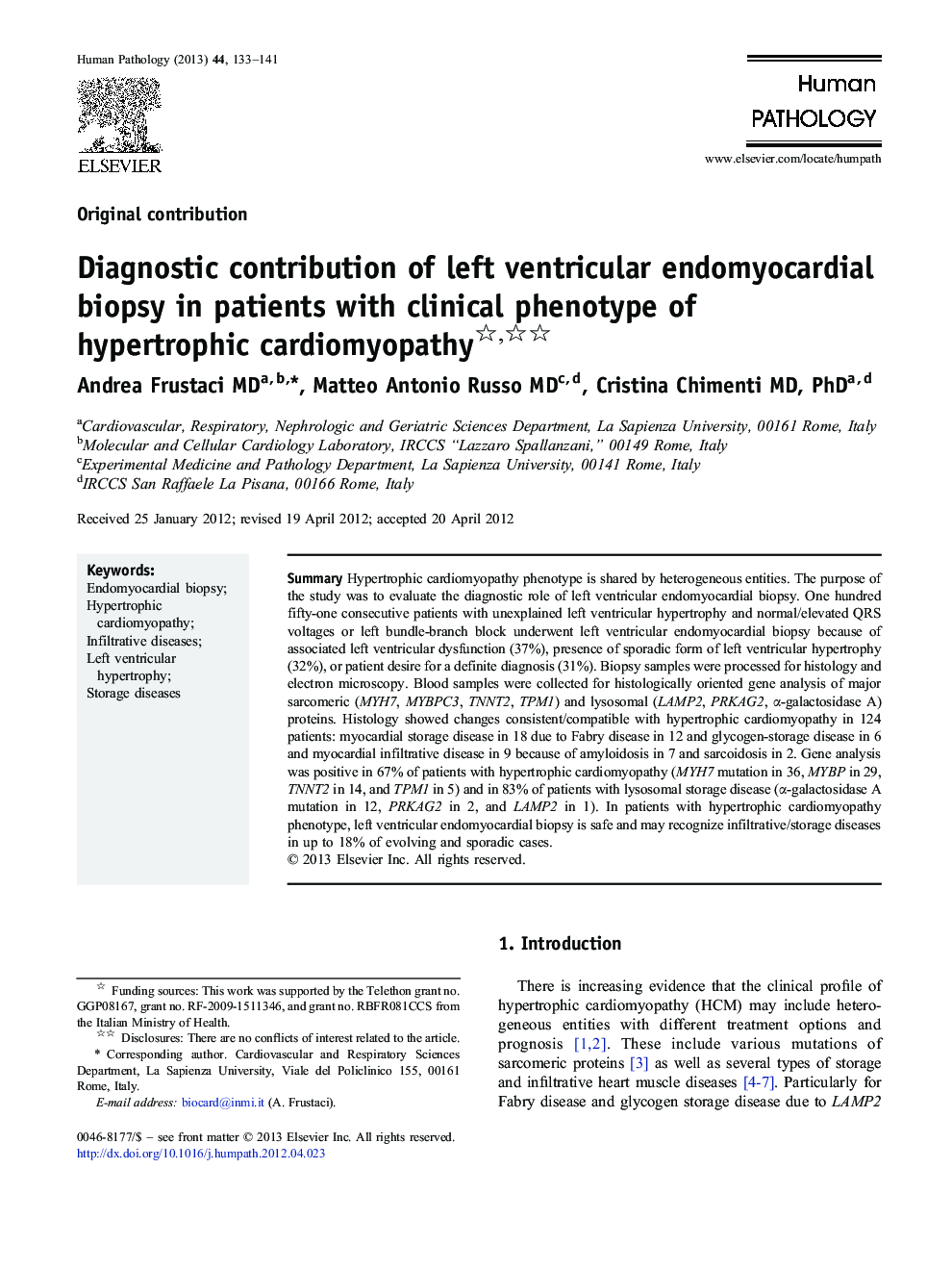| Article ID | Journal | Published Year | Pages | File Type |
|---|---|---|---|---|
| 4133805 | Human Pathology | 2013 | 9 Pages |
SummaryHypertrophic cardiomyopathy phenotype is shared by heterogeneous entities. The purpose of the study was to evaluate the diagnostic role of left ventricular endomyocardial biopsy. One hundred fifty-one consecutive patients with unexplained left ventricular hypertrophy and normal/elevated QRS voltages or left bundle-branch block underwent left ventricular endomyocardial biopsy because of associated left ventricular dysfunction (37%), presence of sporadic form of left ventricular hypertrophy (32%), or patient desire for a definite diagnosis (31%). Biopsy samples were processed for histology and electron microscopy. Blood samples were collected for histologically oriented gene analysis of major sarcomeric (MYH7, MYBPC3, TNNT2, TPM1) and lysosomal (LAMP2, PRKAG2, α-galactosidase A) proteins. Histology showed changes consistent/compatible with hypertrophic cardiomyopathy in 124 patients: myocardial storage disease in 18 due to Fabry disease in 12 and glycogen-storage disease in 6 and myocardial infiltrative disease in 9 because of amyloidosis in 7 and sarcoidosis in 2. Gene analysis was positive in 67% of patients with hypertrophic cardiomyopathy (MYH7 mutation in 36, MYBP in 29, TNNT2 in 14, and TPM1 in 5) and in 83% of patients with lysosomal storage disease (α-galactosidase A mutation in 12, PRKAG2 in 2, and LAMP2 in 1). In patients with hypertrophic cardiomyopathy phenotype, left ventricular endomyocardial biopsy is safe and may recognize infiltrative/storage diseases in up to 18% of evolving and sporadic cases.
